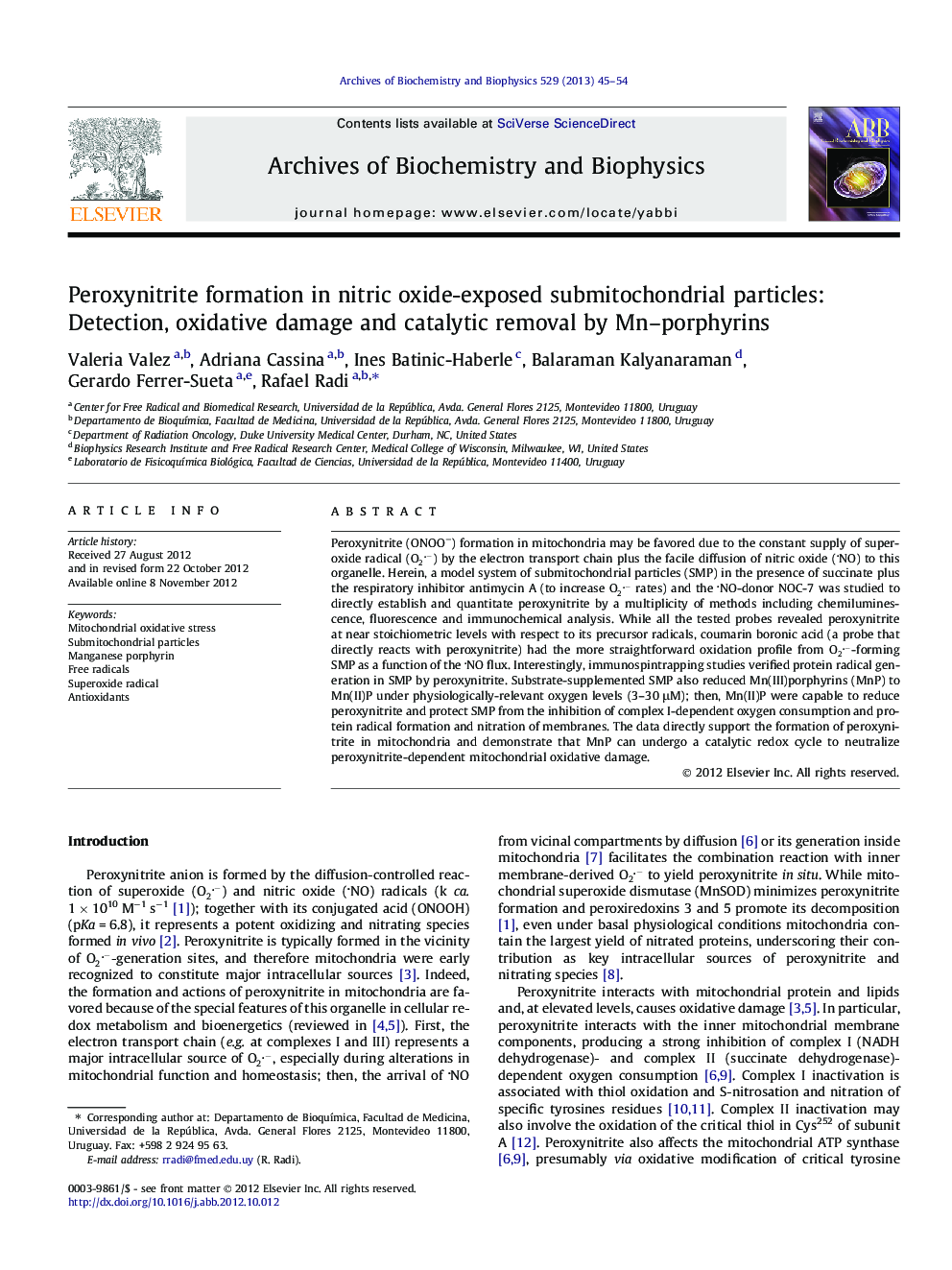| Article ID | Journal | Published Year | Pages | File Type |
|---|---|---|---|---|
| 1925471 | Archives of Biochemistry and Biophysics | 2013 | 10 Pages |
Peroxynitrite (ONOO−) formation in mitochondria may be favored due to the constant supply of superoxide radical (O2-) by the electron transport chain plus the facile diffusion of nitric oxide (NO) to this organelle. Herein, a model system of submitochondrial particles (SMP) in the presence of succinate plus the respiratory inhibitor antimycin A (to increase O2- rates) and the NO-donor NOC-7 was studied to directly establish and quantitate peroxynitrite by a multiplicity of methods including chemiluminescence, fluorescence and immunochemical analysis. While all the tested probes revealed peroxynitrite at near stoichiometric levels with respect to its precursor radicals, coumarin boronic acid (a probe that directly reacts with peroxynitrite) had the more straightforward oxidation profile from O2--forming SMP as a function of the NO flux. Interestingly, immunospintrapping studies verified protein radical generation in SMP by peroxynitrite. Substrate-supplemented SMP also reduced Mn(III)porphyrins (MnP) to Mn(II)P under physiologically-relevant oxygen levels (3–30 μM); then, Mn(II)P were capable to reduce peroxynitrite and protect SMP from the inhibition of complex I-dependent oxygen consumption and protein radical formation and nitration of membranes. The data directly support the formation of peroxynitrite in mitochondria and demonstrate that MnP can undergo a catalytic redox cycle to neutralize peroxynitrite-dependent mitochondrial oxidative damage.
Graphical abstractFigure optionsDownload full-size imageDownload high-quality image (95 K)Download as PowerPoint slideHighlights► Peroxynitrite formation in mitochondria by NO reaction with electron transport chain-derived O2-. ► Boronic acid derivatives as promising probes for mitochondrial peroxynitrite detection. ► Immunospintrapping of inner mitochondrial membrane protein radicals secondary to peroxynitrite. ► Mn–porphyrin reduction by the electron transport chain under physiologically-relevant oxygen levels. ► Mn(II)porphyrins reduce mitochondrial peroxynitrite and protect from nitroxidative damage.
